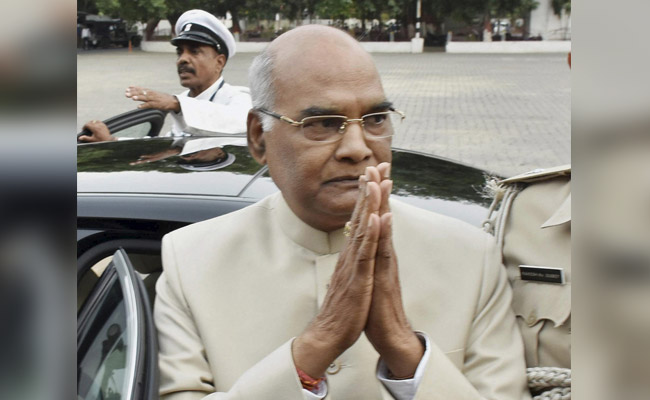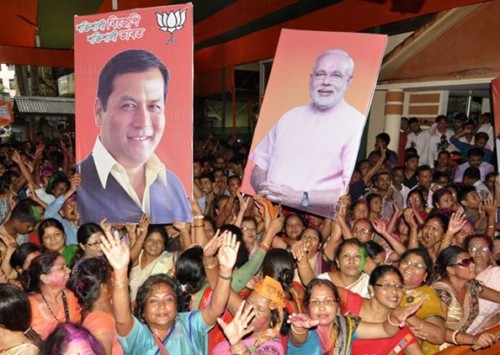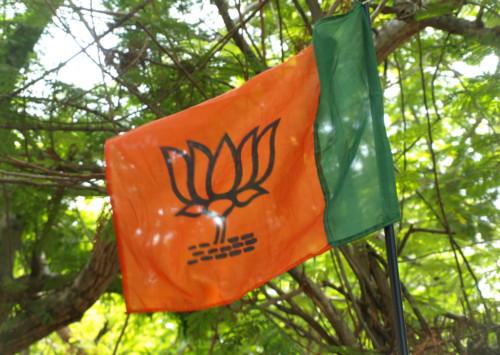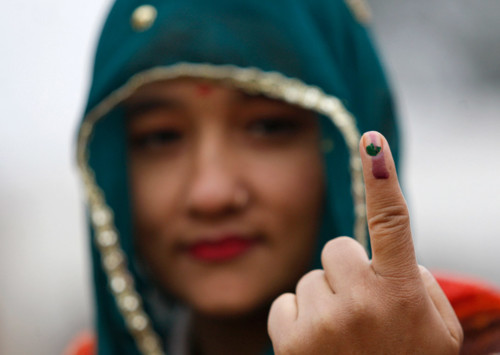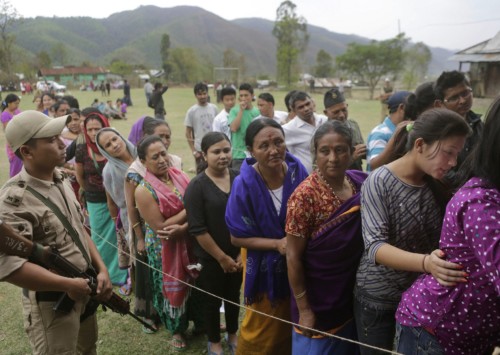BJP’s Ram set to enter Raisina
Ram Nath Kovind, 72, Bihar Governor, a Dalit leader, legal luminary, an open adherent to saffron ideology as well as a constitutionalist, is all set to be elected as the next President of India. With the selection of Kovind as India’s top constitutional head, Prime Minister Narendra Modi and BJP president Amit Shah have played a political masterstroke on opposition parties in more than just ensuring entry into Raisina Hills.
After the sweeping victory in Uttar Pradesh state assembly, the Bharatiya Janata Party (BJP) had moved much closer to sending its choice candidate as the new occupant at Raisina Hill. Towards this end, for the last two weeks, the ruling BJP sought support of all the political parties on the presidential nominee to succeed President Pranab Mukherjee as the next president of India. However, interestingly, it did not put any names on the table. Mukherjee’s tenure ends on July 24.
On June 19, the BJP’s Parliamentary Board chaired by the Prime Minister met for two hours, after which Shah announced Kovind as NDA’s presidential candidate.
If elected, governor Kovind will be India’s second Dalit president after K R Narayanan, who served from 1997 to 2002.
Who is Ram Nath Kovind?
Before we dwell into the political significance of BJP’s choice, we need to know who is this septuagenarian leader who has fired the imagination of the ruling party?
Hailing from backward region of Derapur tehsil of rural Kanpur in Uttar Pradesh, Kovind was BJP’s Lok Sabha candidate from Ghatampur seat in 1990. He lost and never contested again. He was elected twice to Rajya Sabha in 1994 and again in 2006.
Kovind’s political innings began when he became one of the personal secretaries to the then Prime Minister Morarji Desai during the Janata government in 1977. Despite clearing the civil service examination Kovind never took to legal profession and practised in the Delhi High Court and the Supreme Court.
A former BJP national spokesperson he was close to former Prime Minister AB Vajpayee and his deputy LK Advani. He headed BJP’s Scheduled Caste and Scheduled Tribe Morcha (1998 to 2002).
Kovind served as a member of many important Parliamentary Committees, including that of home affairs, law and justice, social justice and empowerment.
In 2012, Kovind was sent to Uttar Pradesh as BJP general secretary in 2012. However, he refused to take up any responsibility for more than a year.
During his parliamentary tenure of for more than a decade, he emphasised on the development of basic infrastructure for education in rural areas by helping in the construction of school buildings in Uttar Pradesh and Uttarakhand under Members of Parliament Local Area Development Scheme.
As a lawyer, Kovind took a leading role in providing free legal aid to the weaker sections of society, especially SC/ST women, needy and the poor under the aegis of ‘Free Legal Aid Society’ in Delhi. He is married to Savita Kovind and has a son and a daughter. He also represented India in the United Nations General Assembly and addressed it in October, 2002. In parliament, he was a member of committees on Dalits, tribes and social empowerment.
Penchant for Surprises
The selection of Kovind displays Prime Minister Modi’s and Shah’s penchant for surprises whether it is Yogi Adityanath as chief minister (CM) of Uttar Pradesh, Devendra Fadnavis as Maharashtra CM or Manohar Lal Khattar as Haryana CM earlier.
Why Kovind?
With this announcement of Kovind as the presidential nominee, the ruling party plans to expand its Dalit support base in the run up to the 2019 Lok Sabha polls and send a strong message to the community. Several events of Dalit bashing and intimidation by Hindutva have hit the headlines recently plunging the BJP’s image. Also controversies have created resentment among Dalits and is said to be building against the party.
“Ramnathji had always worked for the Dalits and the backward. Having been born in a poor family with a Dalit background, he struggled in life and today, the BJP parliamentary party has decided to make him the presidential candidate,” Shah said.
The intention behind the pick, party leaders said, was clear in Shah’s stress on the two words, ‘poor’ and ‘Dalit’.
So Kovind symbolises the BJP’s endeavour to espouse the cause of the downtrodden in a year dedicated to the party’s ideologue Deen Dayal Upadhyay and his Antyodaya (upliftment of the last in the line) philosophy.
Secondly, the strategy behind the selection of Kovind was to checkmate the Opposition and send a message to the Dalits that the BJP stood by the deprived community.
Kovind belongs to Kori or Koli community, who are traditional weavers and are the third largest group among Dalits in Uttar Pradesh. The caste calculations in Kovind’s candidature will unsettle and divide the Opposition.
Opposition to field a candidate
Opposition Parties are set to hold a consultation on June 22, to put up a candidate for the presidential elections. Lok Sabha Speaker Meira Kumar, former Union Minister Sushilkumar Shinde, BR Ambedkar’s grandson Prakash Yashwant Ambedkar, and Mahatma Gandhi’s grandson and former bureaucrat Gopal Krishna Gandhi are said to be the front runners.
The Opposition is of the view that the BJP’s decision to field a Dalit leader for president must be challenged and that it should also announce a Dalit name to contest the presidential election.
Voting for the presidential election is scheduled for July 17, while the counting will take place on July 20.
The President is indirectly elected by the people through elected members of both the Houses of the Parliament of India, the Legislative Assemblies of all the states of India and the Legislative Assembly of the Union Territory of Puducherry, as well as, the Legislative Assembly of the National Capital Territory of Delhi and serves for a renewable term of five years.
No doubt the presidential election is a litmus test for the unity of Opposition parties. We have to wait and watch whether they are able to emerge out of their political bankruptcy.

